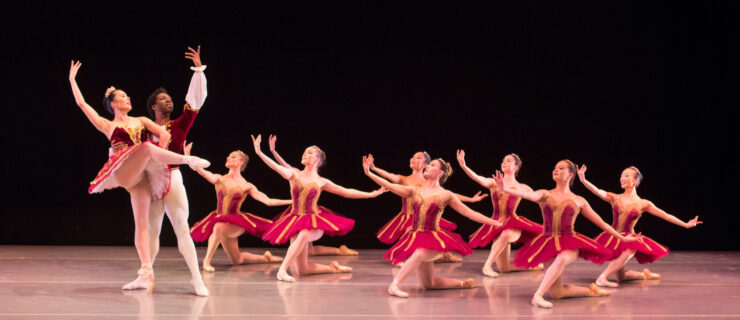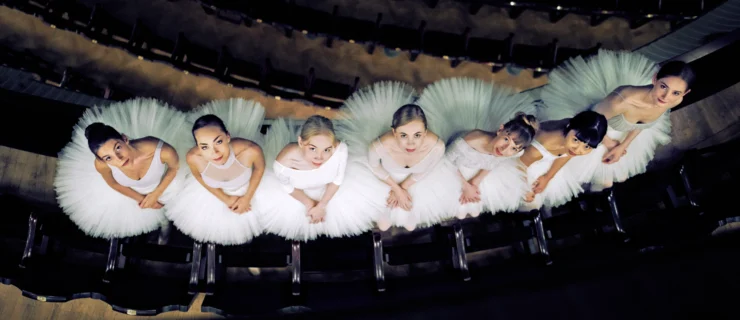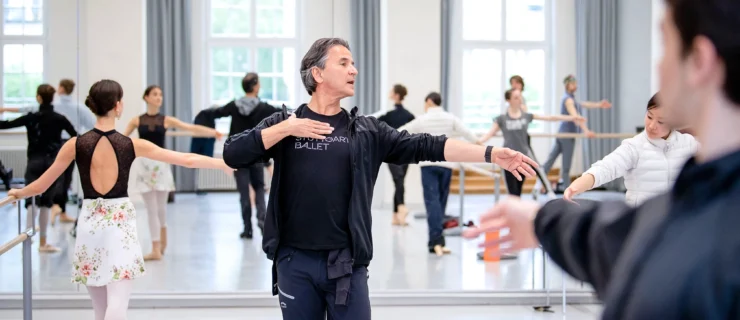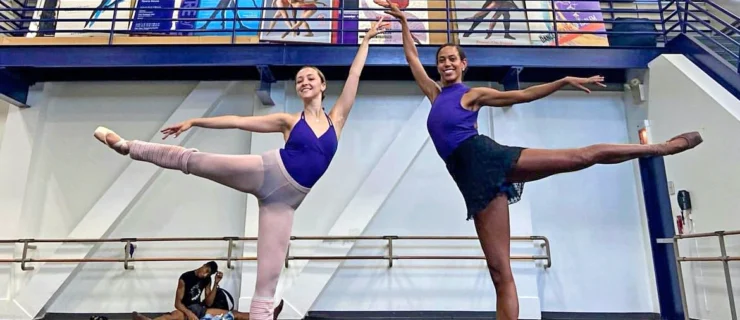Bournonville At 200
“I have accomplished something and enjoyed my artistic career,” wrote the great Danish choreographer August Bournonville in the introduction to his memoir, My Theatre Life. The year was 1846, and he had been choreographing and directing the Royal Danish Ballet since 1829, but was retiring from dancing at age 41. “Now, since I have passed the halfway mark in my journey through life, I find my footprints so faint I fear they will soon disappear…. What a cruel thing it is to be forgotten!”
He needn’t have worried. This year, the 200th anniversary of his birth, the Royal Danish Ballet is presenting its third Bournonville Festival, June 3-11, in Copenhagen. Events include performances of nine of the master’s ballets, a closing-night gala, demonstrations of the six daily classes (which will be made available for the first time on DVD during the festival) and exhibitions in museums and libraries.
This year’s festival is an opportunity to show off what the company is famous for, but it’s also a chance for RDB Artistic Director Frank Andersen to prove that the company is back on track after a period in the ‘90s when the company endured a succession of artistic directors.
“It has been of immense importance that we could devote two seasons to really get into our ballet’s father’s soul,” says Andersen. “It was a necessity to use some time to concentrate on his style—the ballets, steps and classes—and on the way he is taught and rehearsed, as well as on the way he is performed. To really dig into it and have every single dancer in the company feel him, feel the hardness of his steps, the difficulty of his combinations. All of their calves are hurting, but we have begun to know him.
“I’m happy that I am having the opportunity to do this because I love Bournonville. It is in my heart. For me, it’s not so much a matter of whether the tradition will go forward. I think it’s more about where ballet will go,” he adds, noting that Bournonville’s works should not be frozen in time, but should speak to succeeding generations.
This is an important moment for the RDB. These days, the company employs dancers from many countries, and its rep includes works by 20th- and 21st-century choreographers as well as Bournonville. For Andersen, maintaining tradition means keeping alive a particularly Danish way of working. Bournonville ballets have an emphasis on humanity that puts a great deal of responsibility on the individual dancers to keep the work pure.
“You can talk about it in different ways,” says principal dancer Thomas Lund. “But what Bournonville was most interested in was being honest about what you do in everything. You have to have clean work in the legs to show the musicality, and you have to have easy, very held arms on the top. That kind of technique also shapes the way you interpret your part onstage.”
The Bournonville style is all about a simplicity of presentation that doesn’t let the performer hide behind grandiose gestures.
“I think that what is so special here is not just Bournonville,” says dancer Silja Schandorff, a principal since 1992. “You have this special feeling about all of the ballets, because you have seen them and you have been a part of them since you were so young. You begin as one of the little girls and then you are one of the corps and you keep going up. It is your home, your history.”
It is not so unusual to begin at the bottom and work your way up in a ballet company—the difference in Denmark may be how early a dancer gets started on that journey. Bournonville himself began dancing as a child at the Royal Theatre (his father, Antoine, was director there). And still today, most dancers in the company enter the Royal Danish Ballet School as children. In the first act of Napoli, one of Bournonville’s most famous works, the stage bursts with human vitality. The scene is a village square in Italy where suitors vie for the hand of Teresina, the village beauty; old people warm themselves in the sun and children play. Many company members began their careers as those children.
“When I was 6 years old, and I stood on the bridge [in the first act of Napoli], I looked down and I saw [the ballerina] dancing Teresina,” says principal dancer Gitte Lindstrøm “I could never imagine being down there.” Now, she’s the one that the little ones look to with stars in their eyes.
In Napoli, a tale of the triumph of good over evil, Teresina, drowns in a storm at sea, is held captive by the sea spirit Golfo and his nymphs, but is finally saved by the faith of her true love.
“Bournonville’s ballets reflect the human story of being trapped between the mundane and the world of our dreams—our yearning for the unattainable and for pure, exalted love,” says Andersen. He encourages the dancers to aim to be “the best company in the world telling stories.” Students in the school are given mime classes, but once in the company, they receive guidance from “character dancers.” (At the RDB, selected dancers over the required retirement age of 40 remain to perform the mime roles that are in every Bournonville ballet.)
“A lot of tips and traditions get passed on that way from people like [former RDB ballerina] Kirsten Simone,” says principal dancer Caroline Cavallo, who joined the RDB in 1989 and is one of several Americans in the company. “[One of them will] pull you aside and help you out a little bit. ‘Know what you are saying,’ they’ll remind you, ‘have it in your head as a sentence.’”
But it’s not just the mime that makes the storytelling work. Because their bodies have grown up in the choreography, the dancers are free to focus on what the story is about.
“For each of us, there is a core moment,” says Gudrun Bojeson, who was promoted to principal in 2001. We build up to it and explain that more clearly. “For me in Napoli, it’s when Teresina listens to Gennaro’s [her true love’s] heart in the second act.” (In Act II, the drowned Teresina has been turned into a Naïad, one of Golfo’s nymphs; Gennaro has come to rescue her, but she does not remember him.) “I was told that Naïads don’t have hearts, so I think that when she hears that his heart is beating, she realizes that she must be one of his kind.”
Whether it’s through the work of Bournonville, or choreographers like Alexei Ratmansky or John Neumeier, who recently created a full-length Little Mermaid for the company, telling stories that reveal that we are all of the same kind—that’s what the RDB is really about. The festival, Andersen promises, will show that the Danish master’s footprints are clearly etched in everyone’s minds. “The thing that is important for the
people who come,” says Andersen, “is that they can see that we are taking care of Bournonville and that he is alive and kicking in his own house at the Royal Theatre here in Copenhagen.”
For more information on the festival, including programming, performance schedule, as well as other events, go to www.bournonvillefestival.com.
What Is Bournonville?
August Bournonville (1805-1879), Danish dancer, choreographer and former director of the Royal Danish Ballet, created a style of dancing ballet that endures to the present. A virtuoso dancer at a time when the male dancer’s role was being reduced to just supporting the ballerina, he created parts for men that equaled those of the women.
“The whole essence of Bournonville style should be the joy of movement,” says Anne Marie Vessel Schlüter, director of the Royal Danish Ballet School. “The stream of a movement never stops. I call it filigree—the feet do beats and a lot of small things, and on top are beautiful easygoing arms. It should look light, not exaggerated in any way.”
While it should look easy, it is in fact extremely difficult. To preserve Bournonville’s style, one of his successors, Hans Beck, assembled six classes, one for each day of the week except Sunday, from Bournonville’s teaching and choreography. Until 1932, these classes were used for daily training in the Royal Danish Ballet School. Now daily class is comprised of some Bournonville mixed in with the Russian/Anglo/English classes brought in by Vera Volkova in the 1950s.





